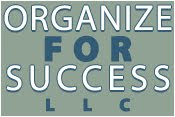Here are a few ways you might be able to minimize your morning madness so you are ready on time and your exit is less stressful.
Start practicing an evening routine to properly prepare for the next morning... Each night, check the next day's schedule to plan what you'll need for all activities. Verify the weather forecast and lay out your clothes for the day as well as any accessories you'll be wearing. Think through what you have for breakfast so you aren't scrambling for something to eat. Go ahead and prepare the next day's lunch; likewise, if you have a tendency to forget grabbing your pre-made lunch from the fridge, leave yourself a "remember lunch" note on the door or by your keys. Have a set place near the door for any items that need to go out the door with you, preparing your keys, work files and purse / wallet / backpack the night before; keep a morning checklist by the door to verify you have all you need. Make sure you have gas in your vehicle. Plus, ensure you don't awake groggy with low blood sugar by consuming a tablespoon of unsweetened almond butter.
Eliminate any unnecessary actions from your mornings... When the goal is getting out the door, it is important to stay focused, but it's easy to get distracted. Can you declutter the night before so there are less distractions? Can unloading the dishwasher wait until after work? Can you absorb the morning's news on your commute to the office instead of in the morning news on TV? For some, these actions are necessary to properly start the day and can put those individuals in the right mindset; however, for others, they are simply distractions that lead to tardiness in getting out the door. Determine in which of those groups you fall and respond appropriately.
Simplify how you accomplish certain parts of getting ready... Choose a hairstyle that is easy to maintain. Choose a breakfast that is easy to prepare, embracing convenience foods, like cereal, yogurt with pre-made granola or frozen waffles. Choose wrinkle-free clothing. Look at each element of your morning; there might be lots of areas to streamline.
Make the most of every available minute...
- Set your alarm clock for 15 minutes earlier than you expect needing to awake, allowing you a brief block of peace before everyone else in your home is up and giving you a buffer in your morning prep timetable.
- Get moving early, remembering that activity breeds activity. Further, our brains and bodies need oxygen to function properly; getting up and moving can open your lungs for more oxygen. I recently started using the 7 Minute Workout app and have been very pleased... It's "just enough" for me!
- Start your day by drinking a tall, cold glass of water with a squeeze of fresh lemon juice, which boosts your energy, promotes good digestion, boosts your immune system, detoxifies the liver, helps you lose weight, encourages better skin and kicks off your day hydrated.
- Proceed through a routine each morning so you take out the thinking, go into autopilot and ensure what's important gets completed each day. Likewise, if you live with others, knowing beforehand who gets in the shower first can be hugely helpful.
- Break each element of the routine into a "zone" so supplies for each action are grouped together and located in the area where they will be used, like tools for getting dressed, tools for prepping your face / applying your make-up, tools for preparing your coffee and tools for making breakfast.
- Use music to motivate yourself. Further, motivate your family's youngest members by making the morning routine a game, like completing set tasks within the duration of set songs.
With just a little planning, preparation and routine-building, it can be much easier to get out of the house and on to your day's activities more quickly and with less stress... Which of these action steps can you incorporate into your life to make an impact on getting ready each morning?




